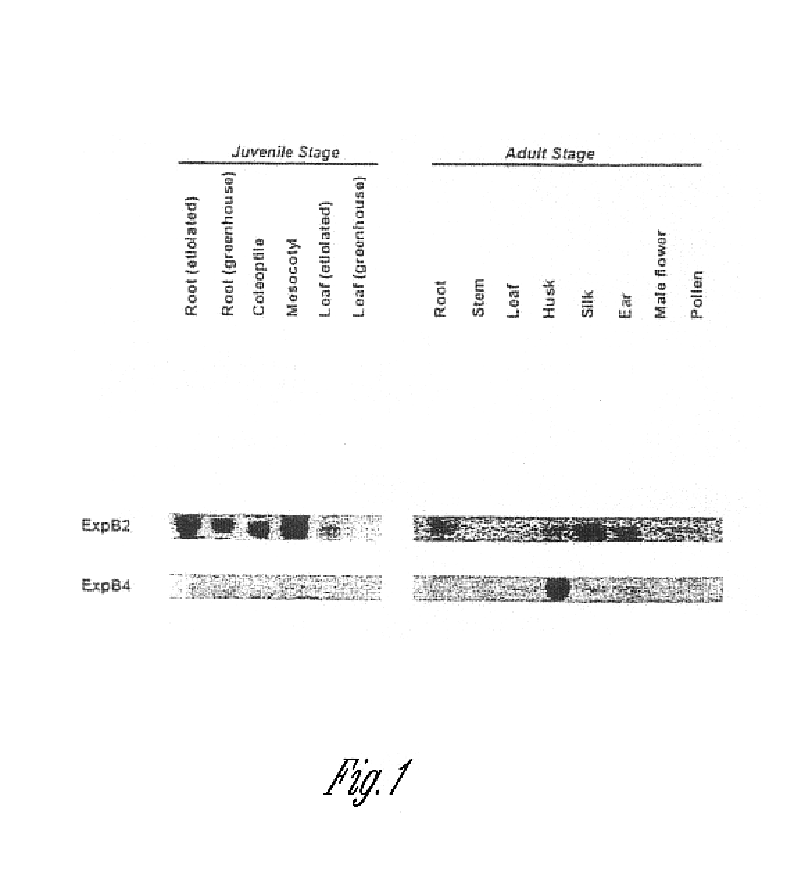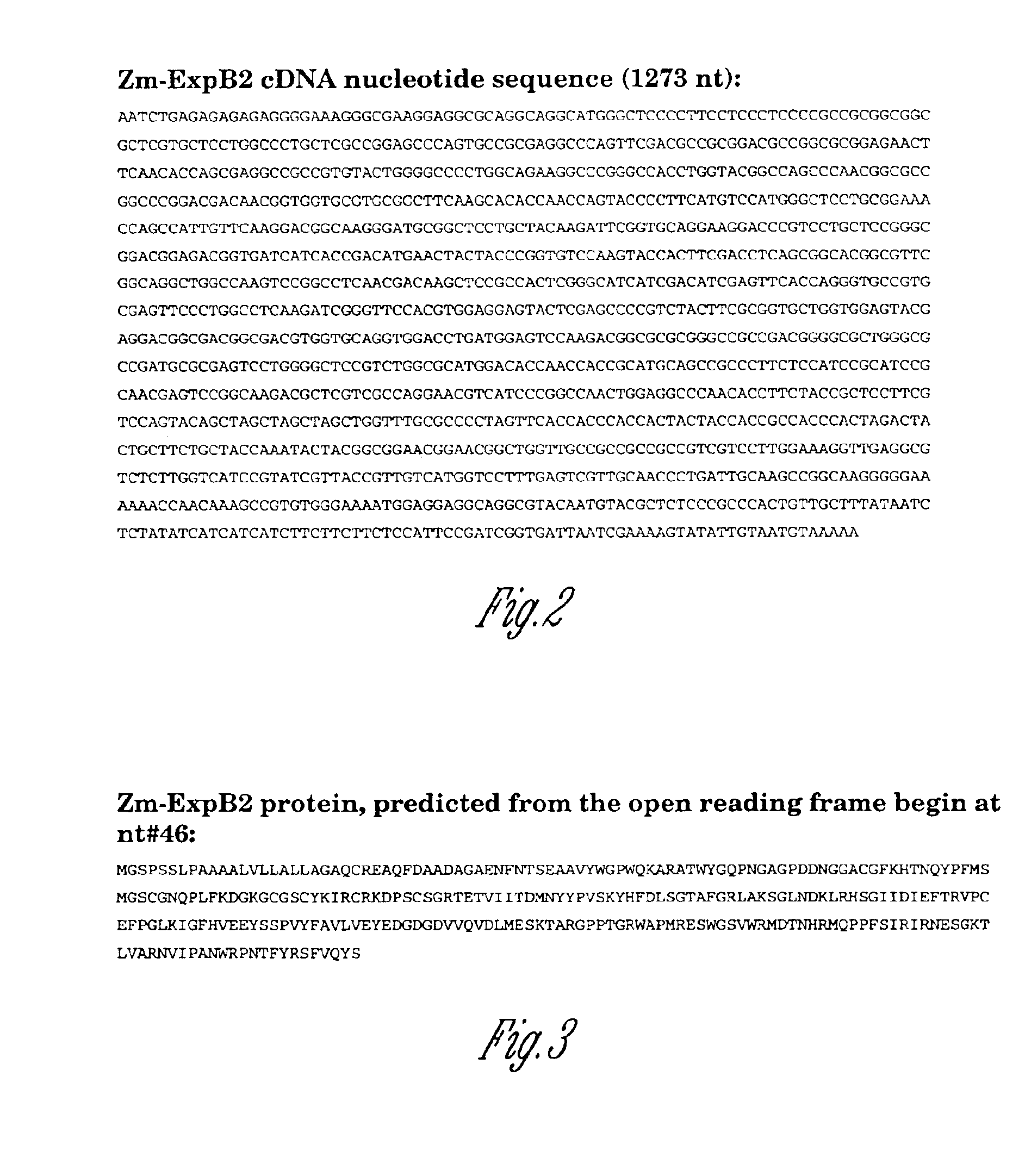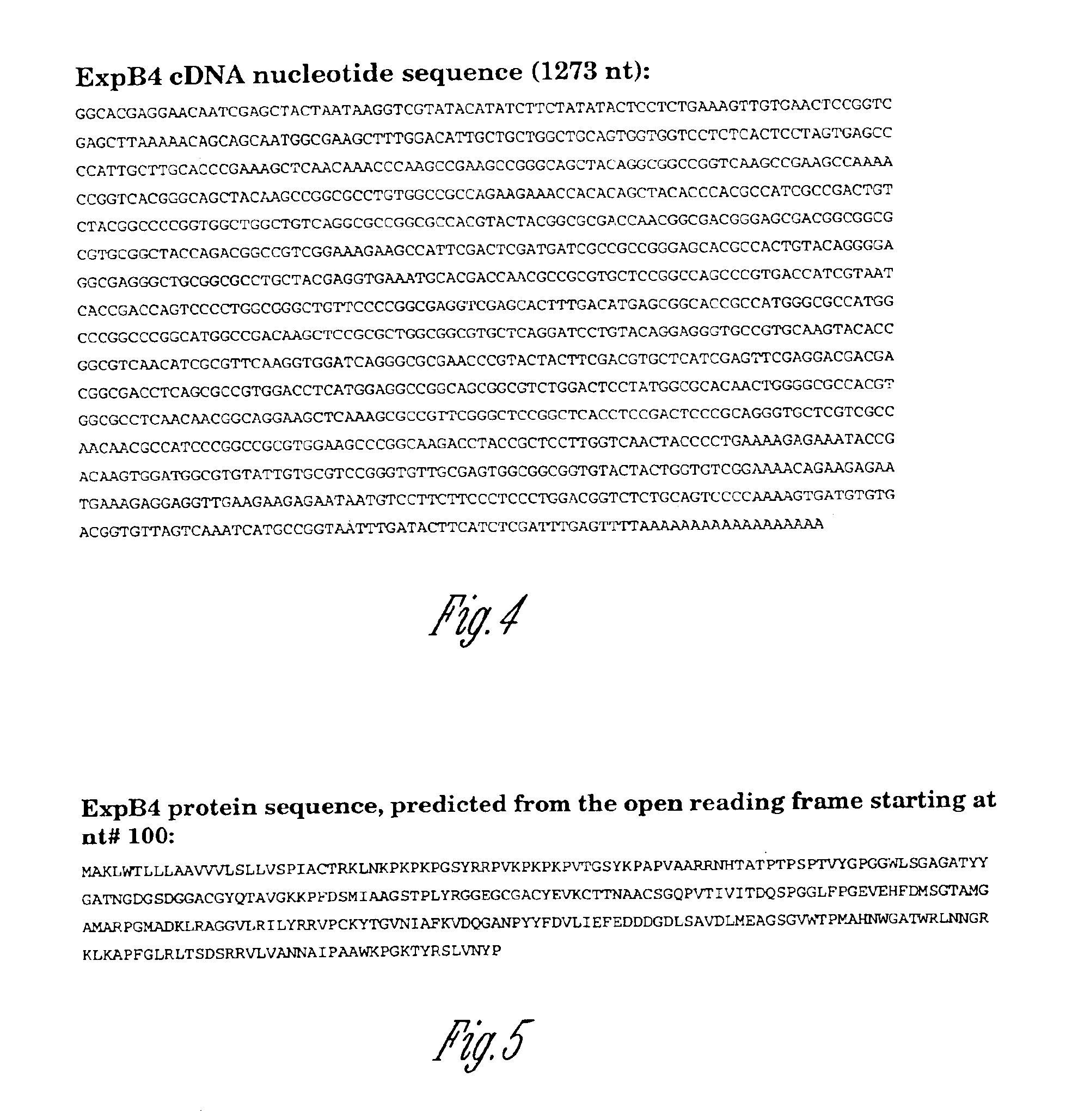Expansin polynucleotides, related polypeptides and methods of use
a polypeptide and polypeptide technology, applied in the field of new expansin proteins, can solve the problems of limiting the work of beta-expansins and largely restricting the work of scientists
- Summary
- Abstract
- Description
- Claims
- Application Information
AI Technical Summary
Problems solved by technology
Method used
Image
Examples
example 1
Plant Materials
[0144]Inbred maize plants were used in this study. For analysis of gene expression, we harvested tissues from maize plants at different growth stages. For etiolated plant materials, a row of seeds was arranged on germination paper (Anchor Paper, MN). The paper was rolled to form a tube and placed vertically in a 2-liter beaker containing 200 mL distilled water. The beaker was loosely covered with another container to reduce water loss. After 96 h at 29° C. in the dark, roots (apical 20 mm), coleoptiles, mesocotyls, young leaves of maize seedlings were harvested under dim green light. For the greenhouse-grown plants, seeds were germinated in the greenhouse in soil (Pro-Mix, Geiger, PA). Young leaves and the whole primary roots of one-week-old seedlings were collected. Several seedlings were transplanted into 6-liter pots for further cultivation. Four days after silks appeared, the youngest leaf near the tassel, the stem (the internode below the tassel), several young a...
example 2
Expansin Activity Assays
[0174]Method of assaying for expansins activity are disclosed in Cosgrove, D. J. (1989) Planta 177:121-130. For creep reconstitution experiments, 1-cm segments were cut from the apical growing region, frozen at −20 C, thawed, abraded with carborundum slurry, heat inactivated and clamped in constant-load extensometers, as described previously (Cosgrove 1989). To compensate for the varvin2 thickness of the wall specimens, 5-g weights were used to keep the silk walls under constant tension, whereas 20-g weights were used for the coleoptile and hvpocotyl walls. For the stress relaxation measurements, the walls were pretreated for 10 min in either buffer or maize pollen extract, then stored on ice prior to extension and stress-relaxation measurements (Cosgrove 1989). Maximal force equivalents for the stress relaxation assays were 5 for silks, 20 g for coleoptile and hypocotyls.
[0175]To test whether an expansin may loosen or expand cell walls. Applicant may extract...
PUM
| Property | Measurement | Unit |
|---|---|---|
| temperature | aaaaa | aaaaa |
| temperature | aaaaa | aaaaa |
| pH | aaaaa | aaaaa |
Abstract
Description
Claims
Application Information
 Login to View More
Login to View More - R&D
- Intellectual Property
- Life Sciences
- Materials
- Tech Scout
- Unparalleled Data Quality
- Higher Quality Content
- 60% Fewer Hallucinations
Browse by: Latest US Patents, China's latest patents, Technical Efficacy Thesaurus, Application Domain, Technology Topic, Popular Technical Reports.
© 2025 PatSnap. All rights reserved.Legal|Privacy policy|Modern Slavery Act Transparency Statement|Sitemap|About US| Contact US: help@patsnap.com



